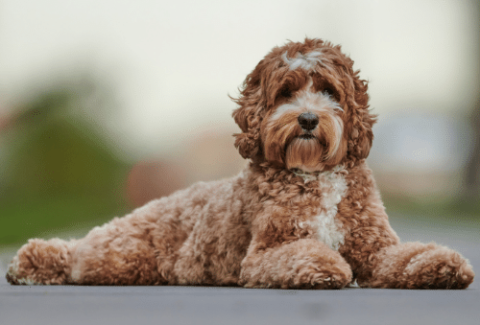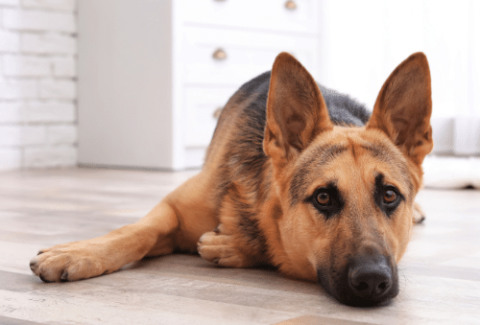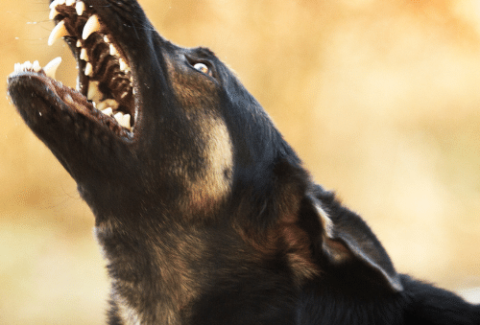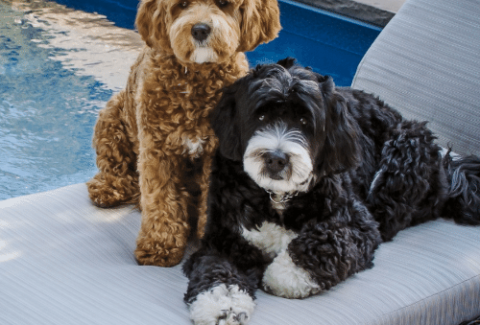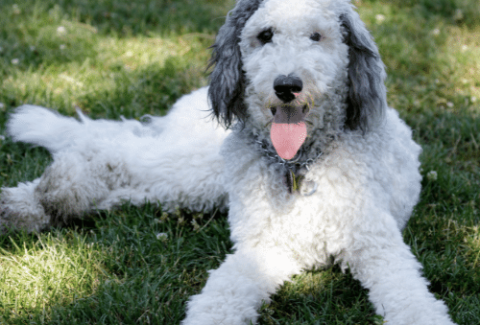How much does a Dogo Argentino cost?
June 29, 2021 2021-06-29 4:50How much does a Dogo Argentino cost?
While the Dogo Argentino was originally bred to hunt big game, it has been used throughout the years for various purposes. For instance, it is commonly used as a guard dog due to its devotion and somewhat territorial nature. It is an extremely strong dog, which makes it suitable for a wide range of jobs.
It can also make a good companion dog if raised correctly. While this dog is rarer, they typically aren’t that expensive. The price of a puppy averages from $1,000 to $4,000, assuming you purchase them from a qualified breeder. Some dogs may cost as much as $8,000 if they have a particularly good bloodline. Dogs from other sources can cost less, but they may be more prone to health and behavioral problems.
You must consider annual costs as well. The first year will be the most expensive, as puppies require extra vet care and more one-time purchases. You can expect to spend about $3,000 for your dog’s first year. After that, the price will go down to about $1,700 a year.
Table of Contents
How much is a Dogo Argentino?
These dogs are larger, which does put them a bit on the more expensive side of things. The mother simply requires more food and room while pregnant, which usually contributes to the higher price of the puppies. Any vet bills will also cost more, as larger dogs require higher dosages of medication.
With all that said, these dogs aren’t as expensive as you would imagine when you consider their rarity. It is difficult to find breeders that specialize in these dogs in the United States. They simply aren’t as popular. However, most breeders do not drive up the prices despite the low supply.
Where you purchase your dog from matters as well. Breeders are the most expensive option, but they usually also produce the highest quality puppies. You may end up spending more upfront, but the dog will likely need fewer behavioral interventions and have lower vet bills.
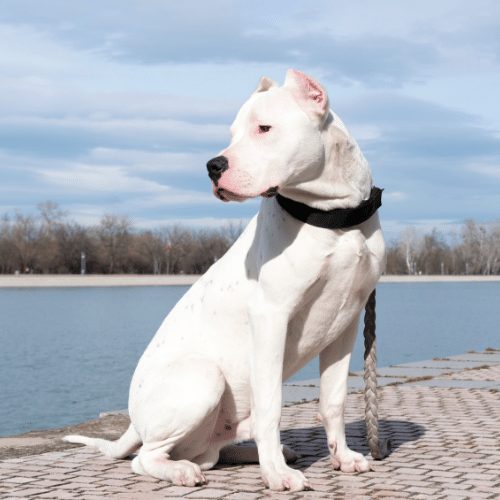
Getting a puppy from Craigslist
When you think about getting a puppy, your first instinct may be to go to craigslist or a similar local marketplace. While you will likely find puppies through these resources, they are probably not the best option. Most professional breeders do not have to advertise through these sources. They have their own websites and social medical platforms.
Instead, puppies on Craigslist often come from unprofessional breeders or puppy mills. (This is not unique to Dogo Argentinos – it also happens with any other breed, especially the sought-after ones such as Mastiffs, Weimaraners, Chiweenies and Chow Chows)
Unprofessional breeders may find themselves with an accidental litter, which they are trying to sell. Alternatively, some regular dog owners decide to try and make money by breeding their dogs.
While there is nothing inherently wrong with this, many of these unprofessional breeders do not understand the best way to raise these puppies. They may not socialize them properly or get the appropriate vet care for the puppies. Most of them do not get the appropriate health testing for the parents, which can lead to an unhealthier litter.
Sometimes, you can get big discounts by purchasing from these breeders. Other times, though, this isn’t necessarily the case. Some may charge full price for their puppies, as they may not understand why puppies from professional breeders cost so much.
Puppy mills are often an even worse source for puppies. These businesses focus on producing as many puppies as they can for as cheap as they can. They often sell their puppies for relatively cheap, though a Dogo Argentino can still go for thousands of dollars.
Often, they may not provide any vet care to the puppies or the pregnant female. Puppies are often removed from the mother too early to encourage her to go back into season, allowing her to produce more puppies. The puppies are usually not socialized or trained at all, which can make them considerably fearful when you bring them home.
Females are bred every cycle, for as long as they can produce puppies. This is both dangerous and unethical and should not be supported! Some puppymills and backyard breeders also cross their Dogo Argentinos with white Pitbulls, and do not actually sell purebred dogs.
While you may get cheaper puppies off of Craigslist and similar websites, these puppies are often not high-quality. Your money also goes towards the improper breeding of more dogs, which can lead to the degeneration of the breed.

Getting a puppy from a rescue
The Dogo Argentino is a rather rare dog, so it doesn’t show up often in rescues or animal shelters. Your local animal shelter will likely never see one of these dogs. Breed-specific rescues may be more promising, but they may not exist in your area. These dogs are simply not popular enough to show up at a shelter with any regularity.
However, if you are lucky and find these dogs at a rescue, you’ll likely be able to purchase them for a seriously decreased price. Most rescues only charge about $100 to $300 for their dogs. Puppies are usually more expensive as they require more vet care.
While these dogs often have unknown pasts, they are usually well taken care of when they make it to the rescue. Most shelters will get the dog proper health care and vaccinations, which reduces your starting vet costs. Because puppies are usually seen by a vet, the rescue will typically be able to inform you of their overall health and let you know about any health problems they may have.
When you adopt from a rescue, you often know exactly what you’re getting. This isn’t always true when you’re purchasing puppies from an inexperienced breeder or puppy mill, especially when the puppy has never seen a vet.
Getting a puppy from a breeder
Breeders are the most expensive option for adopting puppies. However, there is a reason for this. Breeders often spend more money on their dogs and puppies, which leads to higher puppy prices. While you may pay more upfront, these dogs are often healthier and better socialized, which reduces the odds of behavioral problems.
Many breeders take their puppies to the vet at least once before allowing them to be adopted. Many will perform health testing on the puppies before they are adopted, which allows them to provide the puppies with a clean bill of health. You can even get health guarantees from some breeders.
Vaccinations and other preventative care are often started by the breeder, which reduces your overall vet costs.
A qualified breeder will perform the appropriate health testing on their adult dogs before breeding them. This prevents the breeding of dogs with underlying health conditions that may be passed onto their puppies. In the end, healthier puppies are produced by dogs that are health tested, as it reduces the chance of some common genetic problems this breed faces.
On top of these extra health costs, breeders usually provide a better living space and feed their dogs higher quality food. This affects the health and behavior of the puppies, resulting in higher-quality dogs. Unlike puppy mills and inexperienced breeders, professionals will feed their puppies the highest-quality food they can find that supports their development.
Puppies experience a lot of development before they are adopted. Therefore, what they are fed in the early weeks matters. Some diseases are directly affected by a puppy’s diet, such as hip dysplasia.
Costs of health test
Like all breeds, Dogo Argentinos should undergo some basic health testing before they are bred. This ensures that the dogs are healthy before breeding. This prevents the dog from experiencing complications during pregnancy due to an underlying, undiagnosed problem. At the same time, tests for common genetic diseases are recommended to prevent these diseases from passing onto the dog’s puppies.
You want the healthiest dogs to breed – not those with health problems. Testing a dog’s health allows this to happen.
The AKC recommends three different health tests for the Dogo Argentino. These include BAER testing, a hip evaluation, and a cardiac exam.
BAER testing is one of the few hearing tests that work on dogs. It works by detecting the electrical activity in a dog’s ear, so you are able to tell exactly how well the dog is hearing – instead of basing it on objective behaviors. It is completely non-invasive and very easy to perform. While it is recommended that it is performed on all dogs about the be bred, many breeders may also perform it on their puppies to ensure that none of them are deaf.
Generally, these tests cost anywhere from $50 to $100 if they are performed on a puppy. Adults may be slightly more expensive at some vet offices simply because it often takes longer to place the electrodes. Litter discounts are often provided.
Hip evaluation is essential for the health of this breed. They are very prone to hip dysplasia, which occurs when the hip socket does not line up correctly. Sometime during an affected puppy’s growth, the ball and socket stop growing at the same rate. This causes excessive wear and tear, as the bones don’t fit together correctly. Due to this extra wear, the hip never fits together properly again. This causes pain and even lameness.
There is a genetic component to this disease. Therefore, if an adult dog is affected by hip dysplasia, their puppies have a higher chance of being affected as well. However, there are also environmental factors. Puppies that are overfed are more likely to be affected, as the extra calories can cause the hip growth to get out of sync.
A hip evaluation typically involves x-rays of both hips. This helps you determine if the hips are lined up or not. This costs anywhere from $100 to $360, depending on the vet. Some may charge an extra $35 to send the x-rays to a professional for evaluation, especially if the vet is not well-trained in hip dysplasia. Sedation is not recommended, but it may be required for some dogs. This will add an extra $100 to the fee.
A cardiac exam is important for ruling out underlying congenital heart defects, which are usually linked to genetics. These dogs aren’t particularly prone to these problems, but there is the potential for them to pop up.
This exam can cost a varying degree of money, depending on how it is performed. If the vet simply listens to the pet’s heart, it may only add an extra $60 to the cost of a dog’s regular exam. However, some dogs need more extensive testing, especially if the vet is unsure after a quick listen. This can cost $300 to $500, depending on the tests that need to be done.
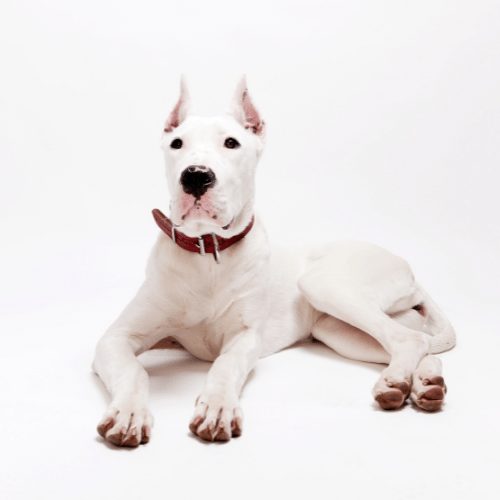
Annual costs of owning a Dogo Argentino
Like most dogs, your first year is going to cost the most. Puppies require more regular vet visits as well as more preventative care. They require more vaccinations, for instance. You’ll also be starting from scratch, which means you’ll need to purchase beds and similar one-time items. This can add up quickly and often leads to a cost of about $3,000 for the first year.
This assumes that your puppy is healthy and has received routine vet care. If the puppy is purchased from an unreputable source, there is a decent likelihood that they will have worms and similar health problems. Treating these health conditions can raise your costs. This also doesn’t include purchasing the dog itself.
After the first year, you’re looking at about $1,700 for each year after that. This will cover your dog’s food and other consumables, like toys. Preventative vet costs are included as well. If your dog needs to be treated for a health condition, your annual costs can go up by quite a bit.
Vet Expenses
Vet costs are often one of the most expensive parts of owning a dog. They can add up quickly.
In the first year, your dog will need a considerable amount of preventative care. Often, puppies need to see a vet at least three times during their first year to receive all of their puppy shots. These visits also include examinations and any tests that need to be performed, such as fecal examinations. You’re looking at about $60 to $250 for each visit, depending on what vaccinations and tests are needed.
In the end, this puts you at about $400 to $800 for the puppy’s first year in vet bills alone. This assumes your puppy is completely healthy and doesn’t need any treatments.
You may want to spay or neuter your dog as well. This will usually cost an extra $150 to $450. Some clinics charge much less and are available in some areas. However, these may have long waiting lists. If you’re looking to save money, it is often in your best interest to look around, though.
After the first year, you won’t have to pay for nearly as much veterinary care. You can expect to pay about $125 to $250 for an annual vet visit. This will include any vaccinations the dog needs, as well as a simple examination. The higher end of the range also includes blood tests that may be necessary for older dogs.
You’ll also need to purchase heartworm and flea prevention. This can cost anywhere from $250 to $500 a year, depending on the size of your dog and the brand you use.
Some lifestyle vaccinations may be recommended. These are not required or widespread, so we did not include them in our costs. Lyme vaccination is recommended for dogs in the southern United States, especially if they spend lots of time outside. This will usually cost an extra $35 a year. Fecal examinations are not included for older dogs and will add another $45 to the examination fee.
Health Conditions
If your dog develops health conditions, their vet costs can go up substantially.
Deafness is quite common. Luckily, this condition involves some lifestyle changes, not any treatment. Diagnoses can cost anywhere from $100 to $300. After that, much of the treatment will involve changing how you train your dog and making other appropriate changes.
While deafness isn’t expensive, hip dysplasia absolutely is. We discussed this condition in-depth in the health test section. However, if you need a quick reminder, it basically involves the ball and socket of the joint not lining up, which leads to arthritis-type symptoms. This condition can occur later in life, or dogs can show symptoms before they’ve even stopped growing.
Treating this condition is often expensive. Dogs that only have minor symptoms can likely get away with supportive treatments only, such as pain medications and supplements. This will cost anywhere from $1,000 to $3,000 a year, depending on what treatments are recommended. If your dog has severe symptoms, they will likely need surgery. This can cost up to $6,000. All of these prices are per hip. If both of your dog’s hips are affected, you can expect to spend quite a bit more on surgery.
Glaucoma is another somewhat common problem these dogs often face. Surgery is often required for this condition, costing about $1,400 to $1,800 per year. If your dog needs surgery on both eyes, the price will often be on the higher end.
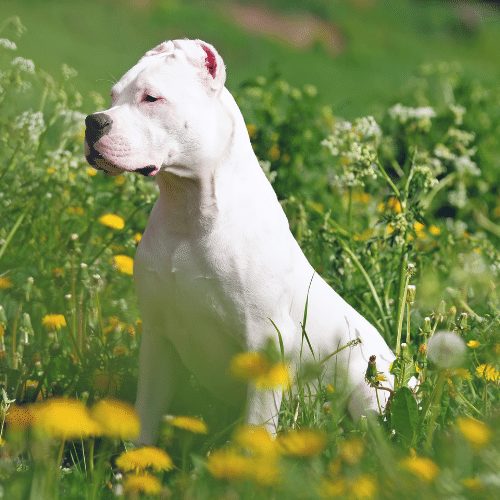
Food and toy costs
As larger dogs, you should plan on spending quite a bit on their food. They eat a lot. We highly recommend choosing high-quality dog food as well, especially since they are prone to some diet-related illnesses. By spending money on better food upfront, you can expect to spend less on vet bills in the future.
You can expect your annual cost for a puppy to be around $350 for higher quality food. For adult dogs, you’ll likely be spending about $500 a year. This increase in price is due to an increase in how much the dog is eating. Puppies typically eat less than adults, especially when the size difference is so massive.
Of course, this assumes you’re choosing a higher quality food. If you choose the most inexpensive food you can find, your overall cost may drop as low as $150. However, your dog may develop more health problems. This will lead to an increase in vet bills, which can end up costing you more in the long run.
We recommend purchasing your dog food in bulk to save the most money. These dogs are large enough to go through a big bag of dog food pretty quickly. They should be able to finish the food before it turns stale.
Specialty diets are a more expensive option, but they may be required if your canine develops certain health problems. Your costs can be as much as $600 a year if your canine needs a special diet. Luckily, most of these dogs don’t require a prescription diet, so you can often get away with regular, commercial dog food.
Toys will cost a decent amount, as these dogs tend to go through them quickly. You can expect to spend about $100 a year on toys. We recommend choosing higher-quality options. These tend to last longer and will likely save you money in the long run, even if they are more expensive upfront. The right toy may even last for years, so invest in the best ones you can find.
Training costs
This breed is large and often has protective instincts. Therefore, training and socialization are required. Luckily, if your start from a puppy, your money will stretch further. Puppies are much easier to socialize than older dogs, as they’re still learning about the world and how it works.
If you start early enough, you can likely enroll your dog directly into group classes. These are what we recommend, as they allow your dog to socialize with others in a safe environment and train. Typically, group classes cost about $100 to $200 for five weekly sessions, which are usually about an hour long each. Puppy classes often cost the same amount, as they’re technically group classes – just for puppies.
Private classes will cost significantly more. This is because you are the only person paying the trainer for their hour, not splitting the cost with multiple different people. Therefore, you should expect to pay about $400 to $700 for a series of private classes. This can vary widely depending on the sort of help you’re looking for and the particular training.
Private classes are only required if your dog simply isn’t safe around other dogs. If they are extremely protective and pose a safety hazard to other canines, you’ll likely need to start with private classes and then move to group classes.
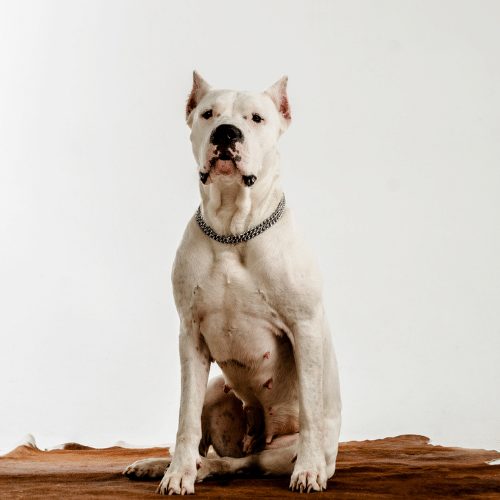
Factors influencing the price
Some Dogo Argentinos are very expensive, while others aren’t. There are many factors that go into determining the price of a puppy.
The dog’s pedigree is often the most important consideration. If a canine has lots of champions in its bloodline and would compete well in the show ring, breeders will likely pay more for that puppy. Therefore, it will be more expensive, even if you aren’t planning on showing your dog.
The experience of the breeder will also play a role. For instance, if a breeder has bred these dogs for years, then they will likely charge more. You’re paying for the extra experience, just like you would for any other service.
The health care a puppy has received usually gets roped into the final price. If a breeder has already started them on their first vaccinations, the puppies will likely cost more. Certain health screenings can also raise the price, including the BAER screening, which is recommended for this breed. All of these things cost the breeder money, so they will likely end up asking more for the puppies.
Some puppies have even been microchipped before being adopted. Obviously, these puppies will cost more as well.
Price considerations
Because these dogs are larger, they are often more expensive to keep. Be sure you have budgeted the appropriate amount of money to feed and take care of them throughout their lifespan. It is better to lean on the side of too much money instead of too little. Therefore, if you’re unsure how much something will cost, budget for the higher end of the range.
These dogs are prone to a few fairly expensive health problems. These are hard to budget for, as you don’t know whether they’ll actually show up or not. Instead, we recommend having an emergency fund of some sort, as this will help cover any surprise bills.
The bottom line
While these dogs are rare, the puppies aren’t actually that expensive. Usually, they cost around $1,000 to $4,000 for a good-quality puppy from a qualified breeder. You can find them for cheaper elsewhere, but less expensive puppies may be more likely to suffer health problems. Usually, they come from unprofessional breeders or even puppy mills, who may not get the puppies proper health care or do the appropriate health testing.
Annual costs for the first year will cost about $3,000. After that, the prices go down to about $1,700. This is largely because the puppy will require more training and vet costs during the first year. Much of the annual costs for these dogs is in their food, which they require quite a lot of due to their larger size.
Steffi Trott
Related Posts
Are Labradoodles High-Maintenance?
At what age do Labradoodles calm down?
Are Pomeranians Good for First-Time Dog Owners?
Are German Shepherds Hypoallergenic?
Are German Shepherds Smart?
Are German Shepherds Vocal?
Are German Shepherds Good With Kids?
Do Bernedoodles like Water?
Do Bernedoodles Like Cats?
How Long Can Australian Shepherds Be Left Alone?
Check out our effective and affordable online dog training courses!
-
Sale Product on sale
 Tackling Reactivity Bundle
Tackling Reactivity Bundle
MONEY BACK GUARANTEE$564.00$49.00 -
Sale Product on sale
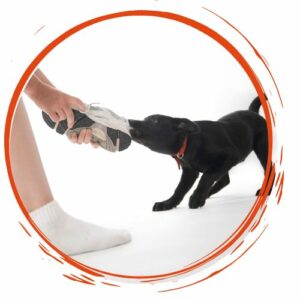 Perfect Obedience Bundle
Perfect Obedience Bundle
MONEY BACK GUARANTEE$349.00$49.00 -
Sale Product on sale
 Ultimate Puppy Bundle
Ultimate Puppy Bundle
MONEY BACK GUARANTEE$416.00$49.00 -
Sale Product on sale
 The Perfect Focus Bundle
The Perfect Focus Bundle
MONEY BACK GUARANTEE$445.00$169.00 -
Sale Product on sale
 Ultimate Masterclass Bundle
Ultimate Masterclass Bundle
MONEY BACK GUARANTEE$2,213.00$499.00


